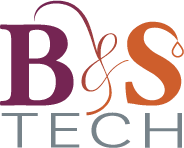Non-alcoholic or lightly alcoholic products are on the rise. From the United States, Europe and France, "low alcohol" references are taking up more and more space on the shelves of supermarkets and specialised shops.
We already knew about alcohol-free beers, which appeared a few years ago; alcohol-free wines, whose consumption is increasing (an increase of +12.3% in 2019); and alcohol-free spirits, whose number of references is increasing year after year. But 2020 was the year of innovation in low alcohol.
Among them, hard seltzers: this carbonated, flavoured and lightly alcoholic water, very fashionable in the United States, has just arrived in France. This low-calorie drink (35 calories per 100 ml) and low in alcohol (around 6°) is sold in cans as an alternative to the beers and cocktails that are popular in summer. While some successful products are imported into France, such as Snowmelt, sold at La Grande Epicierie de Paris, others are 100% French: such as FEFE (for Fait En FrancE) or Opéan, created in the Basque Country. According to Snowmelt/Cobex, hard seltzers should account for 1% of the total alcoholic drinks market in France in 2025.
Another innovation that has appeared on the other side of the Atlantic is beginning to gain popularity: Boissons Atypiques. Created by the American football player Etienne Boulay, the Boissons Atypiques are alcohol-free, low-sugar versions of famous cocktails: rum-coca, spritz, gin and tonic or mojito. These new non-standard mocktails want to become the next summer trend drinks for people who prefer low-calorie alternatives. Only available in Canada at the moment, they may inspire European players.
With the appearance of alcohol-free bars, first in the United States and now in France, an increasing supply of alternative low-alcohol drinks is expected. This is the case for cocktails at "Chez Cozette" in Paris or the alcohol-free beers at the "Gueule de Joie" bar in Nantes. Another discovery: Drinks&Co, a bar, restaurant, shop and online shop, which offers nearly 1000 references of wines and spirits, including many non-alcoholic references.
Thanks to these many innovations, the low-alcohol and alcohol-free market still has a bright future ahead of it. This market, once a niche market, is reaching more and more enthusiasts who are always on the lookout for new products. It is in this context and in order to offer ever higher quality drinks that the players in the sector are increasingly interested in alcohol-free drinks.
